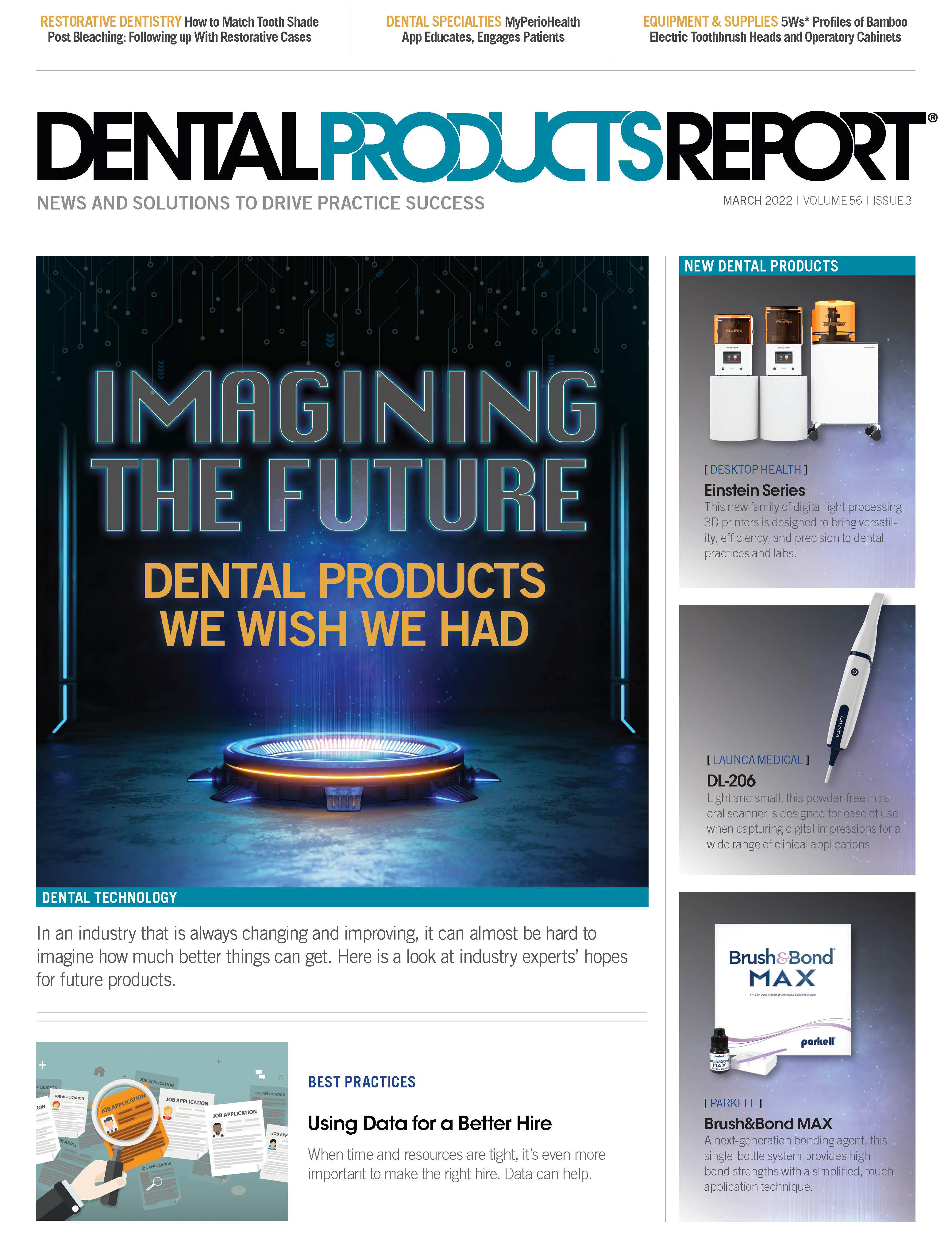In an October article from Dental Products Report®, I wrote about a dilemma many restorative dentists eventually must face. At the risk of seeming repetitive for those who may already have read the original, I will reiterate the article’s premise.
OMNICHROMA
OMNICHROMA is the world’s first universal composite that esthetically matches every patient, from A1 to D4, with a single shade. Its wide color-matching ability eliminates the shade-taking procedure, saving time and money.
Tokuyama Dental America
877-387-3548 | OMNICHROMA.com
Teeth whitening is one of the services most frequently requested by patients. The whitening of vital teeth with carbamide peroxide, which breaks down in the mouth to liberate hydrogen peroxide, in a custom-fitted nightguard has proven to be both safe and effective. Alternative methods have been employed, such as the in-office approach, using very concentrated bleaching agents, with or without lights, to expedite results. Additionally, unsupervised approaches to teeth whitening have become quite popular. Cruise ships, spas, and mall kiosks offer whitening services, with some of these services being in violation of state dental guidelines. A wide array of OTC bleaching materials are also available to patients in retail stores and on the internet, many of which have been proven effective.
Although cost savings may be the motivating factor for the popularity of these unsupervised whitening products, their use can create an issue for patients and their restorative dentists. Patients are unlikely to realize the restorative work done to visible teeth in the smile may be a darker shade after bleaching. A composite restoration or a ceramic crown fabricated to match a patient’s teeth, whose shade may once have been A4 on the VITA Classical Shade Guide, will look dark and out of place as soon as that patient has whitened their natural teeth. If that issue is anticipated and discussed by their supervising dental professional, the patient will understand that replacement of the dark restorations may become necessary. However, if the patient has used OTC bleaching products without supervision, this mismatch in shades can be disconcerting, and the continued use of the whiteners compounds the problem. Recently, a product has been introduced that may provide a potential solution for this dilemma.
Standard composite resins used in dentistry are composed of a resin matrix and filler particles. The size, shape, and density of filler particles are responsible for the physical properties of the material. Using dyes and pigments, materials of various shades are created, which are designed to match the range of VITA Classical shades. This necessitates that dentists stock a large inventory of composite shades, sometimes in varying translucencies, to match their patients’ teeth. Some materials do a better job than others at replicating the desired shade, which can make not having a wide range of shades challenging to match a patient’s dentition. Of course, some patient’s teeth are not a good match for any of the shades on the VITA Classical Shade Guide, making it even more difficult for a practitioner to create a restoration that blends with its surroundings. A newer approach to color in composite dentistry may unlock a solution to this frustration.
Structural color occurs when different wavelengths of light are amplified or weakened by the structure of a material, expressing colors other than what the material may be, according to Tokuyama Dental America. OMNICHROMA represents the first use of structural color in composite dentistry. The composite’s 260 nm spherical fillers are the exact size and shape needed to generate red-to-yellow color—the range found in human teeth. As light passes through the fillers, it produces this red-to-yellow spectrum and combines with the reflected color of surrounding dentition to match. The material, when expressed, is an opaque milky white. When placed in a cavity preparation and light polymerized, the material blends with the adjacent tooth structure and resembles its surroundings. Then OMNICHROMA Blocker can be used in large Class III or IV restorations, where the absence of surrounding tooth structure can cause shade-matching interference. Uniquely, as the shade of the surroundings change, so does the appearance of the restorative material. This characteristic offers restorative dentists a new choice when dealing with patients who bleach their teeth without dental supervision.

